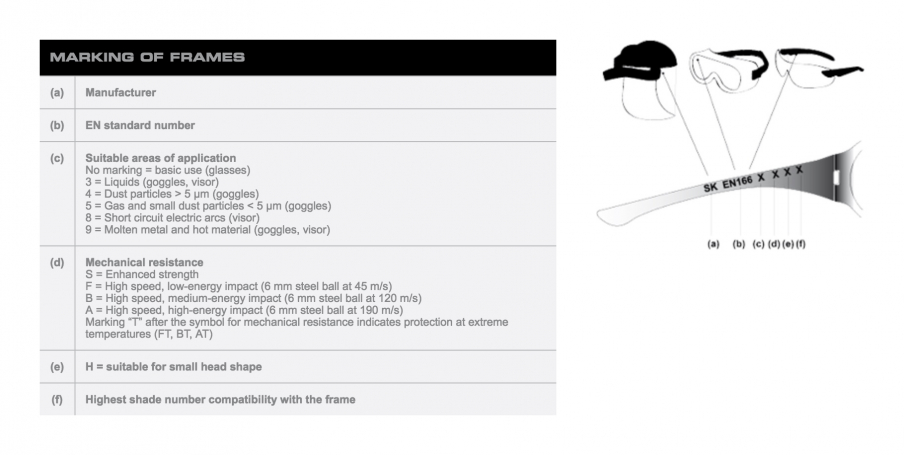More about eye protection


TEST METHODS FOR EYE PROTECTION
Mechanical test according to EN 166 (Enhanced strength) is performed, among others, through a 22 mm diameter steel ball being released on the glass at a speed of 5.1 m/s. “S” specifies that this test has been carried out.
ADDITIONAL TEST FOR PROTECTION TO WITHSTAND HIGH-VELOCITY PARTICLES
A 6 mm diameter steel ball is used and is fired at the protective glass.
Low energy impact 45 m/s is marked with “F”. (Glasses, Goggles, Visors)
Medium energy impact 120 m/s is marked with “B”. (Goggles, Visors)
High energy impact 190 m/s is marked with “A”. (Visor)
OPTICAL TEST
The optical quality of eye protection is divided into 3 classes. Lenses are marked 1, 2 and 3.
Class 1 is the best class with regard to optical properties.
Welding marking
EN standards
| Standard | Description |
|---|---|
|
EN 166 |
Eye protection, requirements and specifications |
|
EN 167 |
Eye protection, optical test methods |
|
EN 168 |
Mechanical tests Describes the different mechanical testing methods in accordance with the requirements in EN 166 and other standards for eye protection. |
| EN 169 |
Eye protection, welding filters |
| EN 170 |
Describes filter requirements for UV radiation |
| EN 171 |
Describes filter requirements for IR radiation |
| EN 172 |
Sunglasses for professional use, even with glare |
| EN 175 |
Eye and face protection during welding |
| EN 207/208 |
Filters against laser radiation/Filter for the adjustment of the laser. |
| EN 379 |
Eye protection, welding filter with automatically darkening welding glass (switchable luminous flux transmittance or double luminous flux transmittance). |
| EB 1731 |
Eye and face protection with wire mesh against mechanical hazards and/or heat for professional use or other uses. |



 Sweden
Sweden Norway
Norway